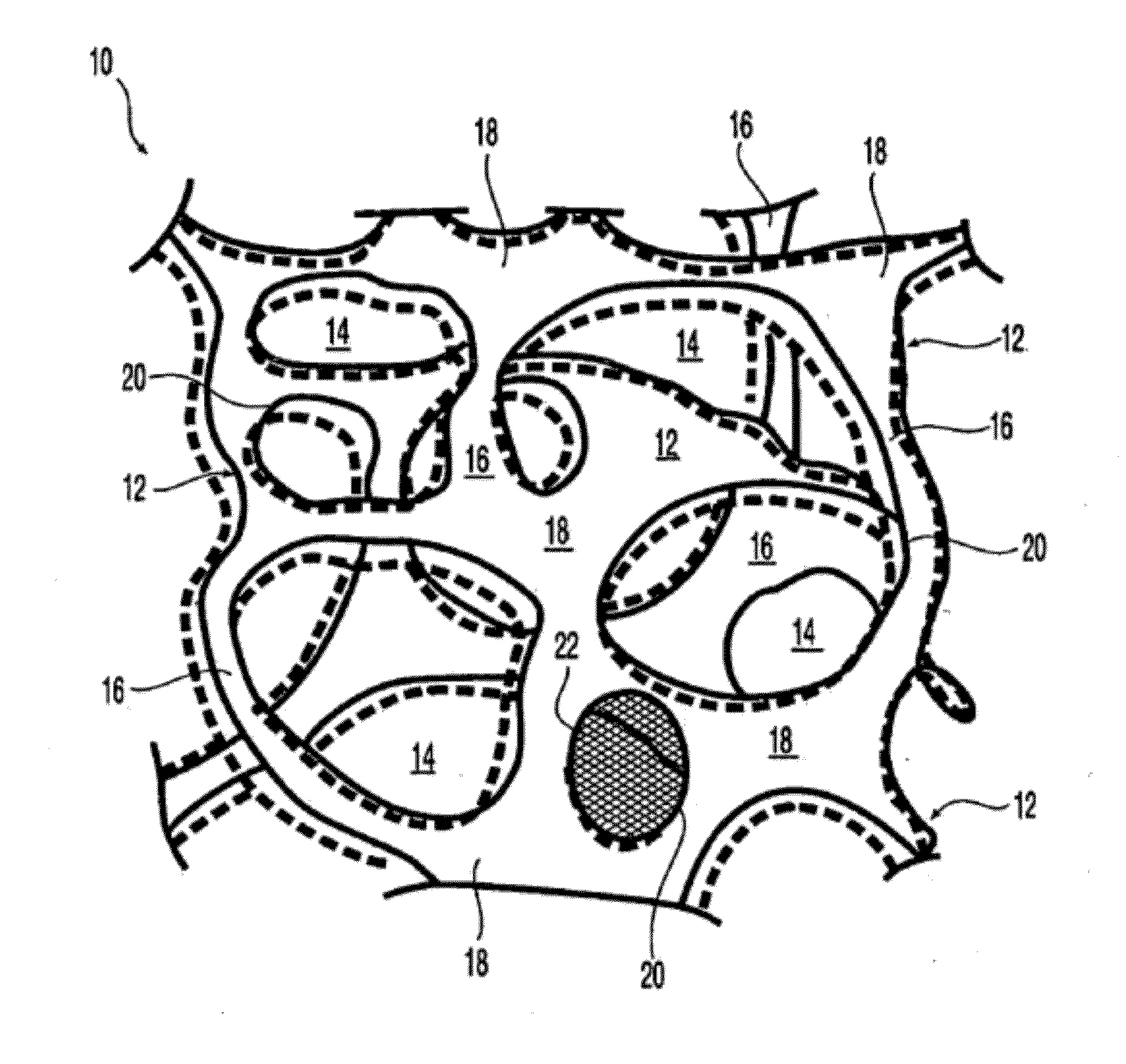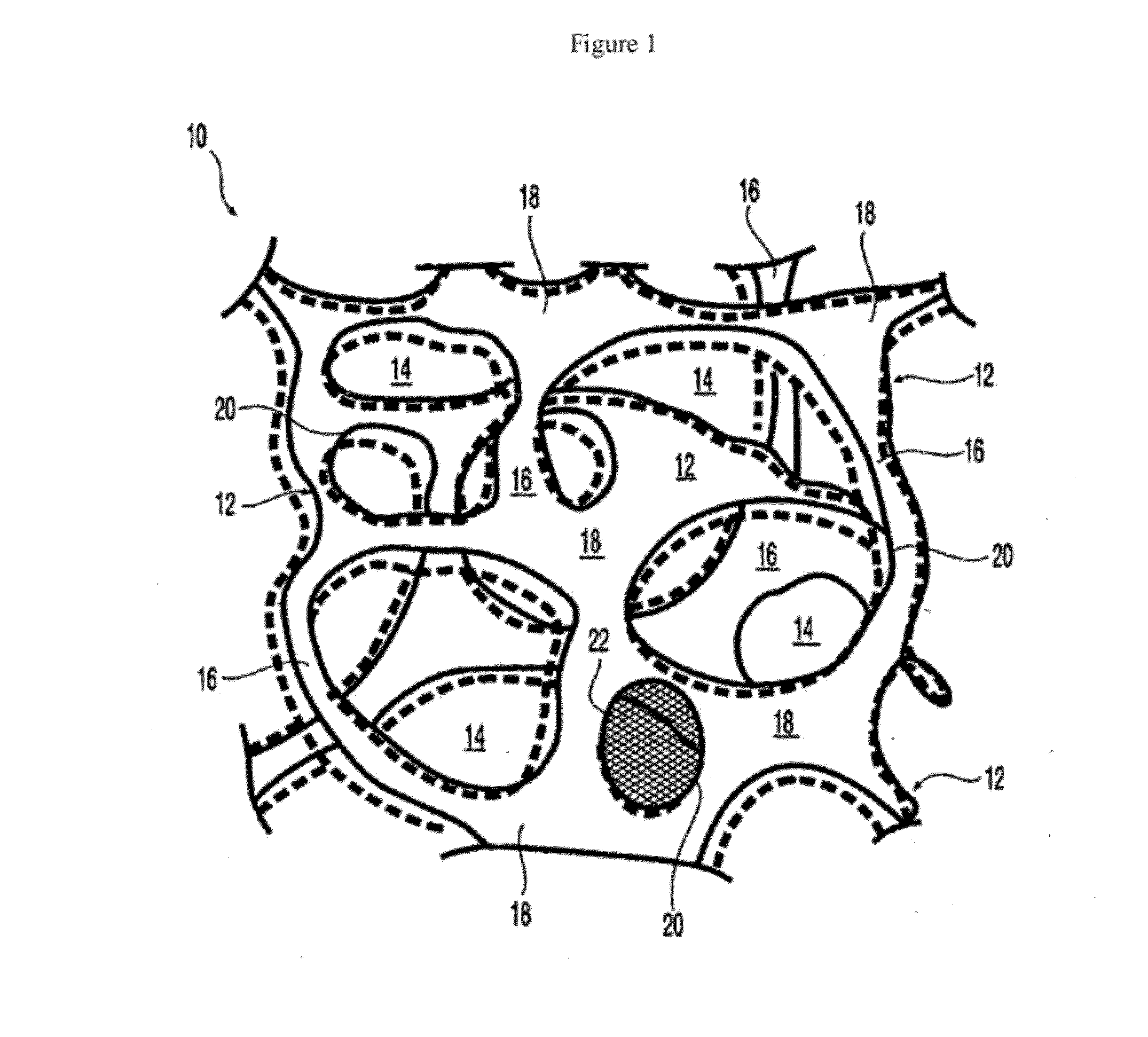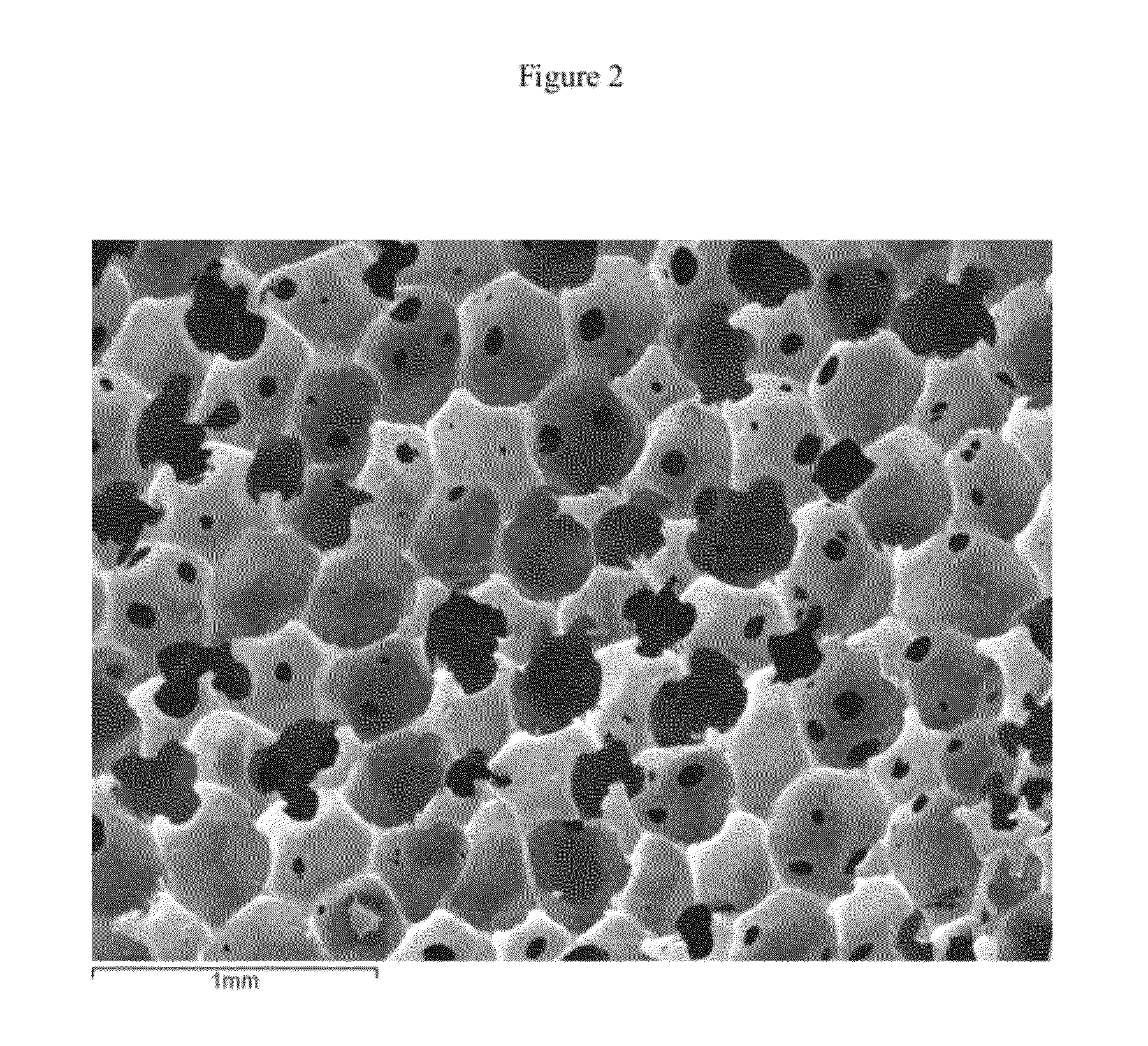At least partially resorbable reticulated elastomeric matrix elements and methods of making same
a technology of reticulated elastomeric matrix and elastomeric matrix, which is applied in the direction of tissue regeneration, pharmaceutical delivery mechanism, prosthesis, etc., can solve the problems of limiting the ability of effective scaffolds to serve as scaffolds, difficult to engineer controlled pore sizes, and undesirable materials, etc., to achieve high void content, high permeability, and high void content
- Summary
- Abstract
- Description
- Claims
- Application Information
AI Technical Summary
Benefits of technology
Problems solved by technology
Method used
Image
Examples
example 1
Synthesis and Properties of Degradable Reticulated Elastomeric Matrix Containing Polycaprolactone Polyol
[0341]A reticulated partially resorbable elastomeric matrix was made by the following procedure: The aromatic isocyanate MONDUR 1488 (from Bayer Material Science) was used as the isocyanate component. MONDUR 1488 is a liquid at 25° C. MONDUR 1488 contains 4,4′-diphenylmethane diisocyanate (4,4 MDI) and 2,4′-diphenylmethane diisocyanate (2,4 MDI) and has an isocyanate functionality of about 2.2 to 2.3. The ratio of (4,4 MDI) to 2,4-MDI) is approximately 2.5:1. A polycaprolactone diol with a molecular weight of about 2,000 Daltons was used as the polyol component and was a solid at 25° C. Distilled water was used as the blowing agent. The catalysts used were the amines triethylene diamine (33% by weight in dipropylene glycol; DABCO 33LV from Air Products) and bis(2-dimethylaminoethyl)ether (23% by weight in dipropylene glycol; NIAX A-133 from Momentive Performance Chemicals). Silico...
example 2
Synthesis and Properties of Degradable Reticulated Elastomeric Matrix Containing Polycaprolactone Polyol
[0353]A reticulated partially resorbable elastomeric matrix was made by the following procedure: The aromatic isocyanate MONDUR 1488 (from Bayer Material Science) was used as the isocyanate component. MONDUR 1488 is a liquid at 25° C. MONDUR 1488 contains 4,4′-diphenylmethane diisocyanate (MDI) and 2,4′-MDI and has an isocyanate functionality of about 2.2 to 2.3. A polycaprolactone diol, POLY-T220 from Arch Chemicals, with a molecular weight of about 2,000 Daltons, was used as the polyol component and was a solid at 25° C. Distilled water was used as the blowing agent. The catalysts used were the amines triethylene diamine (33% by weight in dipropylene glycol; DABCO 33LV from Air Products) and bis(2-dimethylaminoethyl)ether (23% by weight in dipropylene glycol; NIAX A-133 from Momentive Performance Chemicals). Silicone-based surfactants TEGOSTAB BF 2370, TEGOSTAB B5055, AND TEGOST...
example 3
Synthesis and Properties of Degradable Reticulated Elastomeric Matrix Containing Polycaprolactone / Polyglycolide Copolymer Polyol, Polycaprolactone / Polylactide Copolymer Polyol and Polycaprolactone / d-l Lactide Copolymer Polyol
[0364]A number of reticulated partially resorbable reticulated elastomeric matrices using different caprolactone copolymer polyols (custom prepared by Bezwada Biomedical, NJ) were made by the procedure described in Example 2. The proportions of the ingredients that were used for the various formulations and the measured T=0 properties (using methods described in Examples 1 and 2) are provided in Table C below:
TABLE CMDI-PCL / PGAMDI-PCL / PDLAMDI-PCL / PLLAFormulationForm C1Form C2Form C3Form C4Form C5Polyol CompositionCaprolactone / GlycolideCaprolactone / D,L-LactideCaprolactone / L-Lactide75 / 25 mole %75 / 25 mole %80 / 20 mole %Polyol Mol. Wt.About 2500About 1980About 1963Polyol100.00100.00100.00100.00100.00Aromatic Isocyante52.045.560.160.247.3(MONDUR 1488)Glycerin (externa...
PUM
| Property | Measurement | Unit |
|---|---|---|
| volume | aaaaa | aaaaa |
| volume | aaaaa | aaaaa |
| volume | aaaaa | aaaaa |
Abstract
Description
Claims
Application Information
 Login to View More
Login to View More - R&D
- Intellectual Property
- Life Sciences
- Materials
- Tech Scout
- Unparalleled Data Quality
- Higher Quality Content
- 60% Fewer Hallucinations
Browse by: Latest US Patents, China's latest patents, Technical Efficacy Thesaurus, Application Domain, Technology Topic, Popular Technical Reports.
© 2025 PatSnap. All rights reserved.Legal|Privacy policy|Modern Slavery Act Transparency Statement|Sitemap|About US| Contact US: help@patsnap.com



